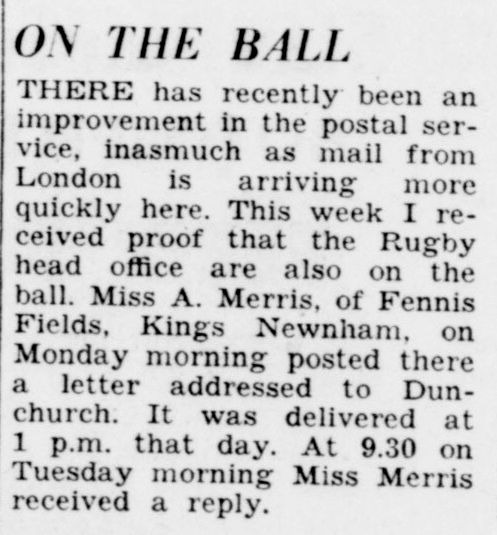Mail Services in the area began during the 19th Century, firstly as a town-based service – as detailed in this Rugby Advertiser clipping from 1852
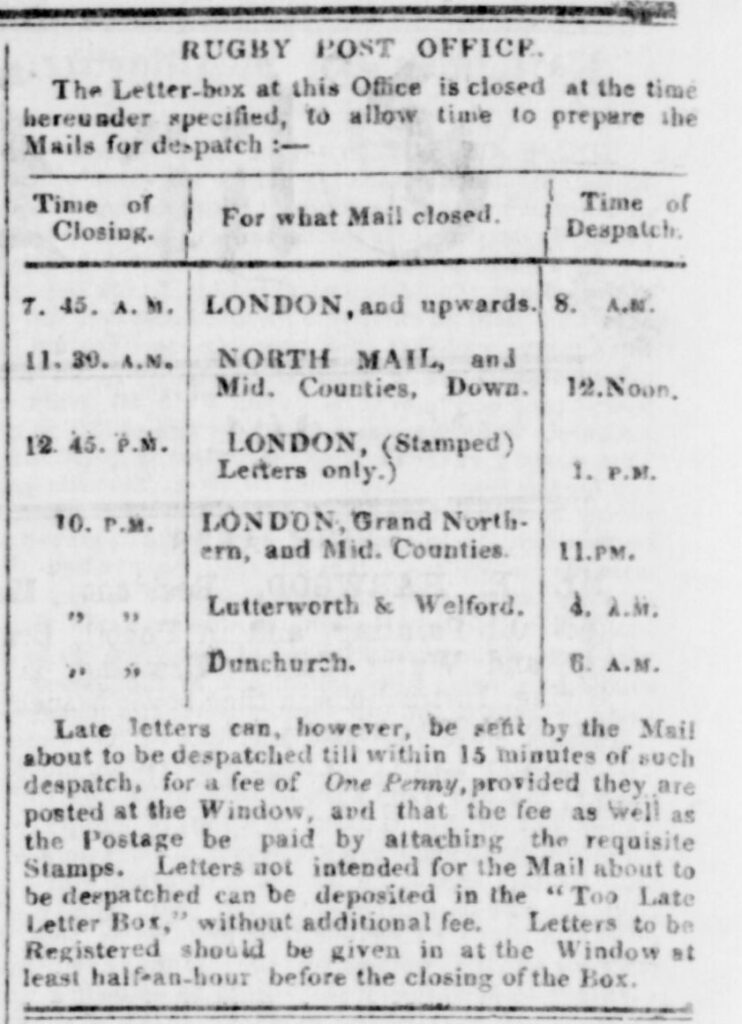
During the second half of the 19th century the Mail service had been much improved, both in terms of cost and coverage. The universal penny post was introduced in 1840 which meant post could be sent anywhere in Great Britain and Ireland for a defined price. The related Royal Mail reform and growth was significant in that it brought a major increase in the number of post offices – and a ripple effect meant that the service in more rural areas also improved. By the last quarter of the century both villages had pillar boxes with letters received in the morning, and sent to Rugby at around 5pm – as shown in the two 1880 extract from Kellys Directory below. Church Lawford saw its first permanent Post Office by around 1880. It was not until 1897 that the Royal Mail were committed to deliver to every home, but it is not clear if this service was available earlier in the two villages.
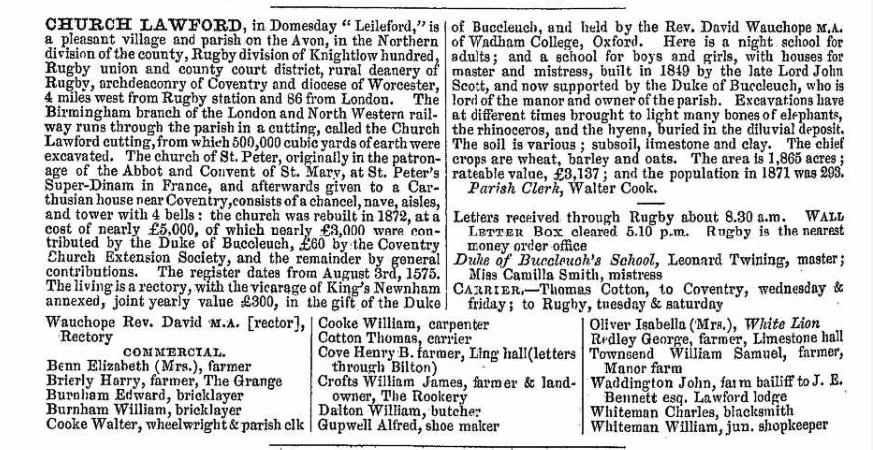
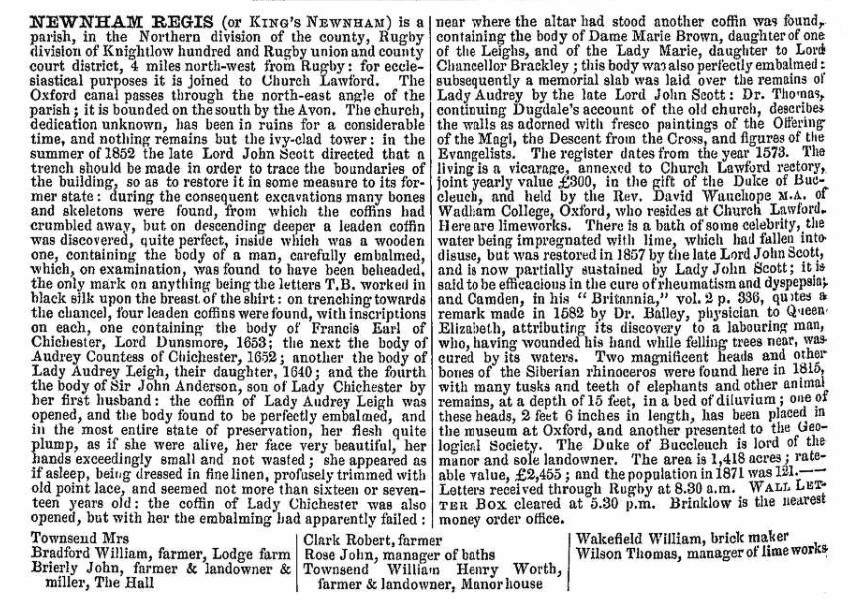
The late 19th and early 20th Centuries also saw a surge in the use of postcards as a means of regular communication. With the speed of the post service now allowing rapid updates to be sent by postcard, it became common to send someone a card to tell them you were planning a visit or had got home safely – knowing that if you posted a card when arriving at a destination by train it was likely to be delivered early the next day. With the postcard rate being a halfpenny, and improvements in photography and printing more and more people were sending picture postcards which could be kept in an album.
An example card below was sent from Alf Day during his early days in Church Lawford, serving as an apprentice blacksmith. His mother collected the postcards she was sent – and the 100+ card collection is still in the family well over 100 years later. With the card below, sent in 1913, showing a village scene from that period, Alf tells his mother about the “hurricane” that hit Church Lawford – “….took a line of fruit trees down in Brierly’s Orchard.”
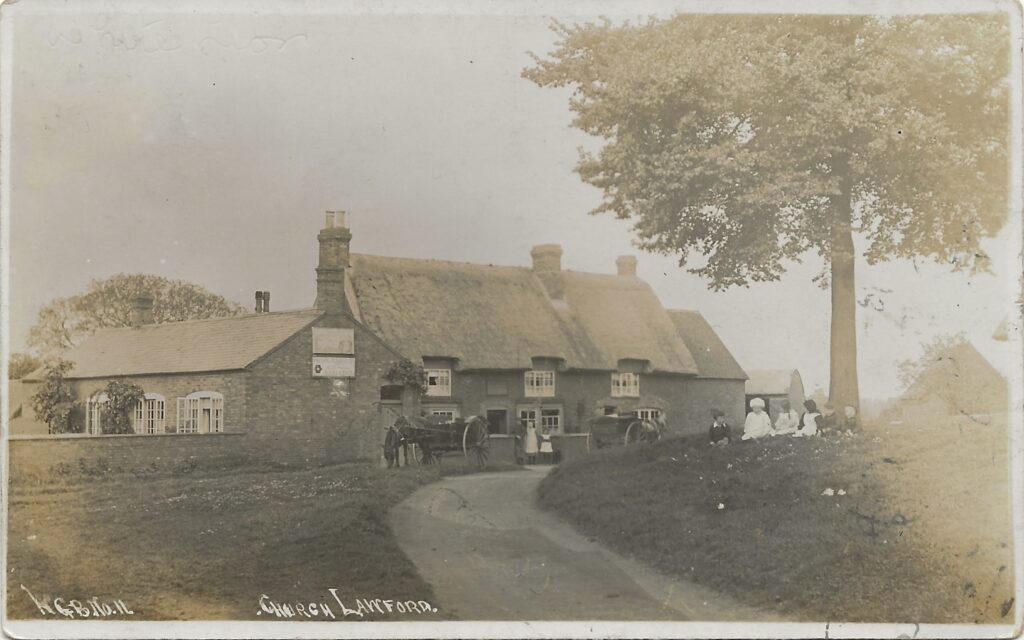
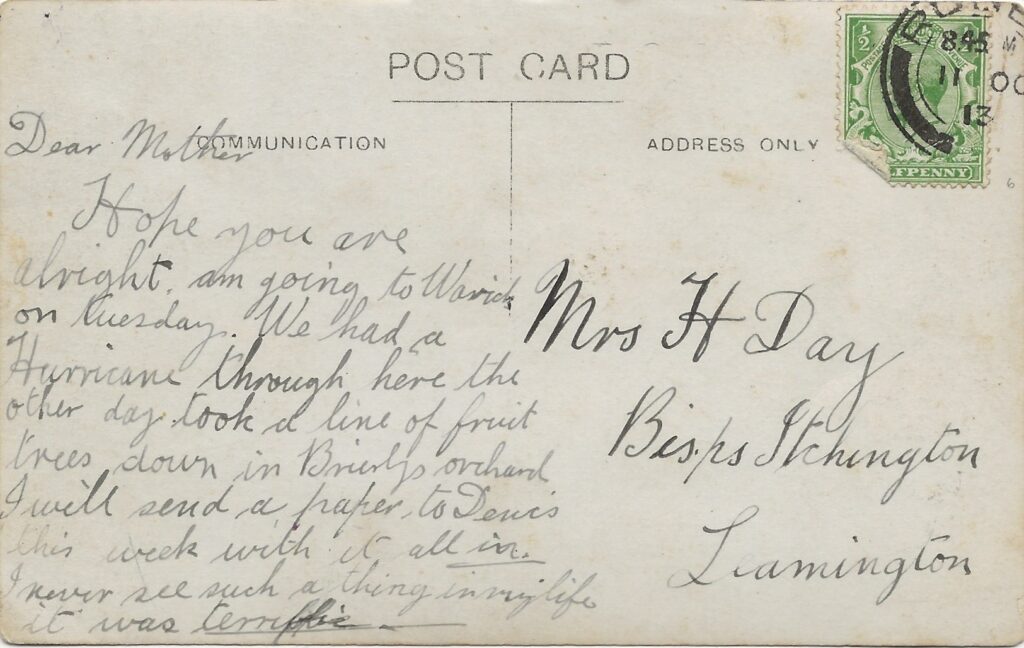
Details of the location of the Post Office and those in charge can be found here.
See here for more details of Telegraph, Telegram and Telephone Services.
Rural Locations have had cause to both praise and criticise their local postal services over the years. An example of good service was recorded for one of the more remote corners of the parish in the “Tower Notes” section of the Rugby Advertiser in March 1966.
